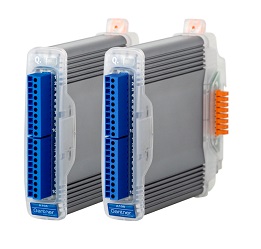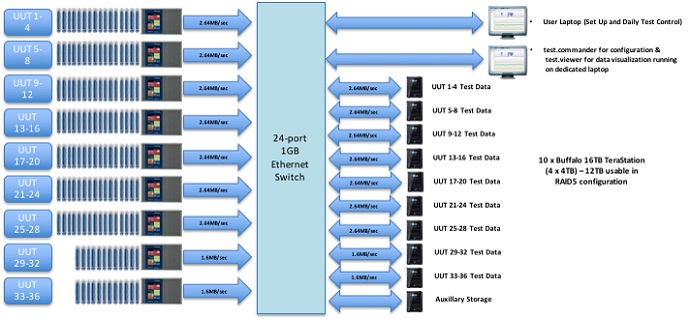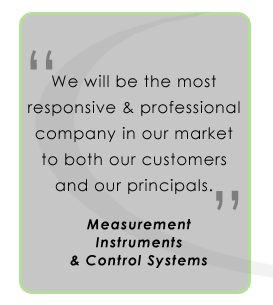
November 2016,
MARIETTA, GA ~
Overview
Fiat Chrysler Automobiles (FCA) is the world’s 7th largest automobile maker, primarily consisting of the Fiat, Chrysler, Dodge, Jeep, and Alfa Romeo brands. FCA has enjoyed tremendous growth over the past few years, due primarily to their ever increasing quality and the delivery of a very innovative and competitive product line up of vehicles. So, when FCA needed to perform a fast-tracked, rigorous test on a key critical component, they turned to the expertise and capabilities of Gantner Instruments.
The Problem
FCA needed to find an automated way to simultaneously test 36 sophisticated electronic control devices while powered in a temperature chamber, undergoing a continuous 90-day cycled temperature and humidity test. Each device had 25 voltage (up to 100VDC), current and temperature points of measurement that required precise, isolated, high speed (5KHz) synchronization and data logging. This data would then be used to capture any anomalies seen during the testing, which could then be further studied (post acquisition) by FCA engineers to determine causes of potential failure and proposed corrective actions. So the major challenges were:
-
How to monitor, condition, synchronize, acquire, and store laboratory quality data on 900 channels @ 5KHz per channel.
-
How to organize and log this data – automatically –without the requirement for a connected computer of any kind.
-
Generate Hourly reports of all channels showing min/max peak signal measurements during the hour.
-
How to operate 24/7, unmanned, for a total of more than 2,100 hours.
-
How to deliver and commission the system, without custom programming.
Time was of the essence for this project. FCA had a very small window to complete this test, and they knew that it had start up quickly and work correctly the first time, since it would take (at least) 90 days to complete. Gantner stepped up with a proposed solution that utilized all off-the-shelf components, that could be integrated and delivered quickly into a turn-key system, all at a price point that was extremely competitive.
The Proposal
The power and flexibility of the Q.series products allowed Gantner to tackle each aspect of this application one at a time. The modularity of the Q.series allowed the best ‘ mix and match’ product selection available to FCA for this application, including:
-
Q.bloxx Measurement Modules – A104 and A108
The A104 was selected to provide precise, isolated, noise free thermocouple measurements. The A108-100 was chosen to provide isolated, high-speed voltage and current measurements on the 0-100VDC inputs. All modules were high density =, DIN-rail mounted for each of installation.
-
Q.station Controllers -
The power and performance of the Q.station controller provided the platform necessary to handle all of the synchronization, logging and data management for the application – all with any custom programming or requirement for a connected PC. The Q.station was the ‘master controller’ in the system and replaced the need for an connected PC to operate.
-
Test.commander Configuration Software
- The configuration and visualization capabilities of test.commander provided a very cost effective, off-the-shelf solution to easily configure the complete application – all with fill-in-the-blanks menus and not one line of programming code. Test.viewer (a component of test.commander) was also used to visualize real time and archived data using familiar trend chart anad oscilloscope formats.
A key objective of this project was to use only commercially available off-the-shelf components, with no custom software or special expertise required to operate. This was accomplished with the proposal from Gantner, and the whole system was designed so that it could ship within 2-3 weeks from the receipt of order, and be pre-configured at Gantner, so that it could be installed and commissioned within days of delivery.
The Gantner Solution
Due to the amount of streaming data, and the number of channels per unit under test (UUT), it was decided the the best approach was a distributed one, where (9) Q.stations would be used, each with 100 channels of measurement (25 channels per unit under test). Each UART on the Q.station was dedicated to (1) of the units under test, so each Q.station handled (4) units under test. Each Q.station had (8) data loggers configured through test.commander: (4) real-time loggers for 5KHz data sampling on each UUT and (4) hourly report loggers that captured the min/max data on the same samples. It was required that additional loggers be available should they be needed – which was not a problem as up to 20 data loggers were possible on each Q.station.

Each Q.station was configured to stream it’s collected data to an assigned NAS storage device (16TB Buffalo Terastations), each configured to operate with 12TB of storage in a RAID5 configuration for data redundancy. It was calculated that the data storage requirement was for 10.7TB per Q.station, so 12TB was sufficient. A tenth Terastation was deployed to store the hourly summary data, and provide a way to move files around (using the engineering laptop) for additional analysis in MS Excel. A 24-port Ethernet switch tied everything together. All equipment was mounted in a portable 19” rack mount chassis that was placed next to the thermal test chamber that housed the 36 units under test.
The test ran continuously for more than 2000 hours and went flawlessly (for the Gantner equipment), allowing the customer to gather the critical data with high reliability, high accuracy, on time and under budget.

|





